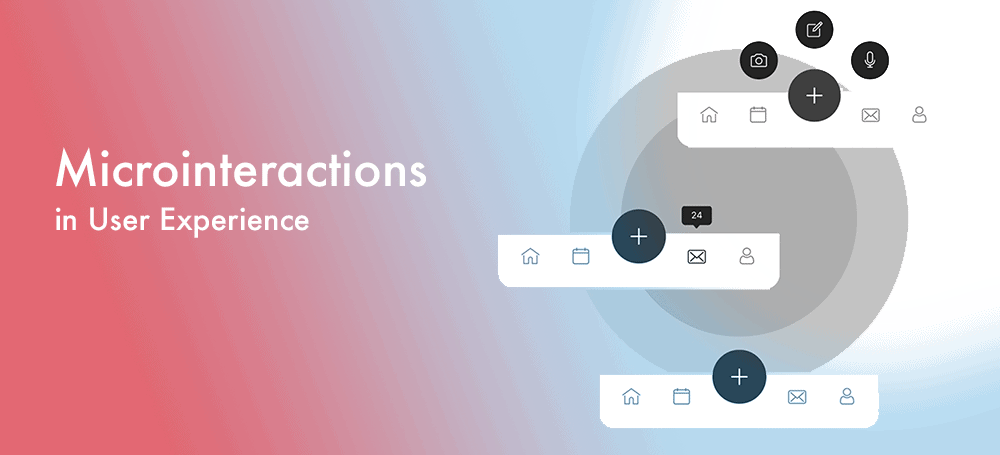

The Power of Microinteractions: Elevating User Experience through Small but Impactful Details
Microinteractions are small design details that are often overlooked by designers but have the power to elevate user experience.
As digital products continue to infiltrate every aspect of our lives, a seamless and delightful user experience has become more important than ever before. Whether it’s a mobile app or a website, users expect a high level of functional and aesthetic satisfaction from the products they interact with. However, it’s easy for designers to get caught up in the bigger picture without paying attention to the small design details, which can have a tremendous impact on a user’s overall experience. This is where microinteractions come into play.
Microinteractions are small design details that are often overlooked by designers but have the power to elevate user experience. They’re the tiny interactions that users have with a product, such as clicking a button or scrolling through a list. These seem like insignificant actions, but when these interactions are designed with a focus on usability and delight, they can make a huge difference.
This blog post will explore the importance of microinteractions and share tips and best practices for designing delightful ones that enhance the user experience.
What are Microinteractions?
Microinteractions are small design details that can elevate user experience and make user interfaces more engaging. They are the little things that make a big difference in how a user interacts with a product or service. Microinteractions involve the use of animation, sounds, and visual feedback to create a seamless interaction that is both intuitive and engaging. They can be found in all kinds of products, from mobile apps to websites to physical devices. When done well, microinteractions can add delight and personality to a user experience, making it more memorable and enjoyable. As a user experience design agency, it is our responsibility to create these delightful microinteractions that help users interact with products in meaningful ways, ultimately creating user experiences that feel intuitive and pleasurable.
 Source Dribble
Source Dribble
Understanding the Power of Microinteractions
Understanding the Power of Microinteractions is crucial to elevating user experience with small design details. Microinteractions are the small details that add up to create a greater experience for the user. They are the signals, animations, sounds, and visual feedback that users receive as they navigate through a website or app, and they are a fundamental component of user experience design. By paying close attention to the microinteractions, user interface designers and programmers can create a more engaging, intuitive, and delightful user experience. A user experience design agency that understands the power of microinteractions can add significant value to a product, as these small design details can make a lasting impression on users and set a product apart from its competitors. By carefully incorporating microinteractions into the design process, an agency can create a seamless and enjoyable user experience for its clients’ customers, turning users into loyal customers.
Benefits of Microinteractions
Microinteractions are a key component of user experience design that are often overlooked but can significantly impact user satisfaction and engagement. Microinteractions are small interactions within the user interface that occur based on user input or system events. They can include animations, sounds, and visual feedback, and provide users with immediate and satisfying responses to their actions. Effective microinteractions can improve overall user experience by providing a sense of control over the system, reducing user frustration, and creating a sense of delight. By incorporating microinteractions into a design, an agency can elevate user experience and create a more engaging product. Therefore, it is crucial for any user experience design agency to focus on creating delightful microinteractions that can improve the user experience and increase user engagement.
 Source Dribble
Source Dribble
Crafting Effective Microinteractions
Microinteractions are small design details that elevate the user experience by adding delightful elements to user interfaces. They are the little things that we may not always notice, but when they are done right, they can make a huge impact on the usability and overall satisfaction of an app or website. Crafting effective microinteractions involves careful consideration of animation, sounds, and visual feedback that enhances the user experience. A user experience design agency can help create microinteractions that not only provide useful functionality but also delight and engage the user. Designers should prioritize simplicity and clarity in microinteractions, ensuring that they are intuitive and easy to understand. By incorporating well-crafted microinteractions, designers can differentiate their products from competitors and create memorable experiences for their users.
Examples of Microinteractions
As a user experience design agency, we recognize the importance of microinteractions in creating a delightful user experience. Microinteractions refer to small design details that provide users with helpful information, feedback, or animations within a user interface. These details can include anything from sounds that provide auditory feedback when buttons are clicked to animations that illustrate transitions between different screens. Essentially, microinteractions are the small details that make using a digital product not just functional, but pleasurable. By incorporating visual feedback such as progress bars or notifications that pop up to let users know when actions are completed, designers can create a more intuitive and engaging experience. In short, well-designed microinteractions not only increase user engagement, but they also elevate the overall aesthetic appeal of a digital product.
Consider how users interact with the microinteraction
When creating microinteractions, it is essential to consider how users will interact with them. Microinteractions are small design details that are crucial in elevating the overall user experience and creating a delightful user interface. The reason microinteractions are so important is that they add a layer of sophistication and depth to the design. They are often subtle animations, sounds, or visual feedback that respond to user actions, creating a natural flow between the user and the interface. As a user experience design agency, it is our responsibility to refine these small details to ensure that they enhance the overall experience. Keeping the user in mind, we carefully design microinteractions that provide instant feedback, reduce cognitive load, and create a positive emotional response. The design of microinteractions requires a balance of creativity and functionality to create a seamless user experience.
Test and refine the microinteraction design with users
One critical aspect of creating delightful microinteractions is to test and refine them with users. A microinteraction is a small design detail that can have a significant impact on the overall user experience of a product. Hence, it is essential to involve users at every stage of the design process to create microinteractions that are intuitive, engaging, and meet their needs. User feedback can provide valuable insights into how they perceive the microinteractions and how well they function in the context of the overall user interface. Conducting user testing can help designers identify and address any usability issues, gauge the effectiveness of the animation, sounds, and visual feedback, and refine the design based on their findings. As a user experience design agency, we understand that testing and refining microinteraction design is crucial to elevate the user experience and ensure that the final product meets the needs and expectations of the users.
The Future of Microinteractions
Microinteractions have always been an essential component in designing a delightful and persuasive user experience. But the world has changed with time, and the definition of microinteractions has evolved tremendously. In today’s digital era, microinteractions represent the small design details, such as buttons, sliders, checkboxes, toggles, and many other interactive elements that enhance the user experience. The future of microinteractions is about blending in with the users’ context, making the interface more human-like, and adding an emotional connection to the users. The microinteractions must provide visual feedback, sound, and animation to mimic the physical world’s experience. As users get more engaged, the interaction must become simpler and faster. So, designing persuasive microinteractions has become the core to add delight and engaging experience to the user interface. Agencies and user experience design agencies must focus on creatively designing microinteractions to elevate the user experience and make the product memorable.
In conclusion, microinteractions are small details that can have a big impact on user experience. By designing microinteractions that are both functional and delightful, designers can create a more engaging and user-friendly experience for their audience. By paying attention to these small details, designers can elevate their designs and leave a lasting impression on their users. By implementing microinteractions, designers can differentiate themselves from competitors and create a truly unforgettable user experience.
